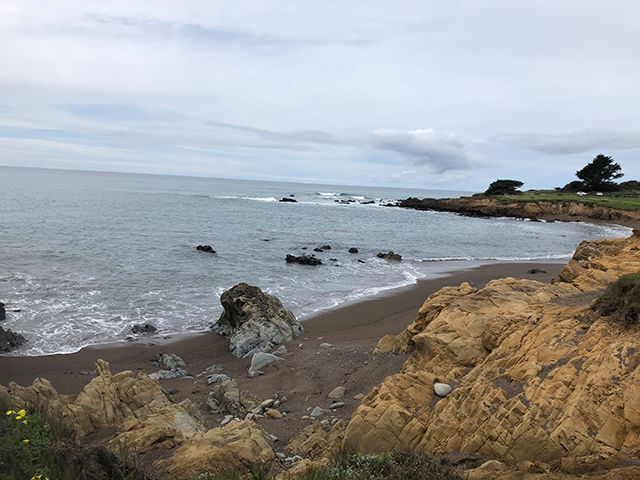Matthew 21:1-11 - The Triumphal Entry into Jerusalem
Matthew 21:1 When they had come near Jerusalem and had reached Bethphage, at the Mount of Olives, Jesus sent two disciples, 2saying to them, “Go into the village ahead of you, and immediately you will find a donkey tied, and a colt with her; untie them and bring them to me. 3If anyone says anything to you, just say this, ‘The Lord needs them.’ And he will send them immediately.” 4This took place to fulfill what had been spoken through the prophet, saying, 5“Tell the daughter of Zion, Look, your king is coming to you, humble, and mounted on a donkey, and on a colt, the foal of a donkey.” 6The disciples went and did as Jesus had directed them; 7they brought the donkey and the colt, and put their cloaks on them, and he sat on them. 8A very large crowd spread their cloaks on the road, and others cut branches from the trees and spread them on the road. 9The crowds that went ahead of him and that followed were shouting, “Hosanna to the Son of David! Blessed is the one who comes in the name of the Lord! Hosanna in the highest heaven!” 10When he entered Jerusalem, the whole city was in turmoil, asking, “Who is this?” 11The crowds were saying, “This is the prophet Jesus from Nazareth in Galilee.”
Background: The Gospel accounts of Jesus’ final entry into Jerusalem differ in many details. Palms are only mentioned in John. In Mark he rides a colt, people spread their cloaks and branches on the road. In Luke Jesus rides a colt and the much smaller crowd throw their cloaks on the road. In John, Jesus rides a donkey and the people waves palms. In Matthew, my true favorite, they do it all including having Jesus ride simultaneously on both a colt and a donkey! Why? Well, each gospel writer had access to different traditions, to be sure. They also each had a theological point of view that was the lens through which each saw, understood and added emphasis to the stories that had already been shared for generations before coming to our writers. Matthew sees the grandness of the parade welcoming Jesus as Messiah into Jerusalem as setting the stage for the events that were about to unfold. The ‘crowds’ almost function as one character in this drama. They have been miraculously fed (more than once) and they think that Jesus is finally the one who will do what they have waited for. He will restore their nation and give them decent lives and a measure of dignity. It is significant that in Matthew this procession begins on the Mount of Olives, the traditional location where Messiah was supposed to appear. The prophecies alluded to in this text are all Messianic predictions. God has finally come through for them. But they do not yet even know their own hearts.
The Double Procession: Some Biblical scholars surmise that there were really two processions into Jerusalem going on that day. One was, of course, Jesus’ rowdy entry with his rag tag band of disciples. The other, on the other side of town, would have been the majestic procession of the Roman governor, Pontius Pilate into town. Pilate did not live in Jerusalem but came with his soldiers from Caesarea Maritima to Jerusalem to keep order during the Passover festival. Pilgrims came from all over by the thousands to celebrate Passover in the holy city. Jerusalem, a city of about 40,000 inhabitants, swelled to nearly 250,000 on Passover. That was a daunting challenge for law enforcement. So we have here two very different pictures of royalty and power. Pilate with his shining
legion of well trained soldiers. And Jesus and his procession of the hopeful poor crying out to him Hosanna, which simply means save us.
Word Study:
Vs. 1 – Jerusalem – The central city in Palestine and the spiritual home of Israel.
Bethany and Bethphage – small villages in what we would call suburban Jerusalem.
Mount of Olives – a place long associated with the coming of Messiah. According to Zechariah 14:4-5, this is the place where God will commence the final judgment of Israel’s enemies.
Vs. 2 – donkey and colt – Zechariah 9:9 says the King will come riding a colt (literally – young horse). Popular belief, however, was that Messiah would come as a warrior King riding a warhorse.
Tied there – Genesis 49:8-12 speaks of a tethered colt. Many understood this to be a Messianic prophecy.
Vs. 5 – Is a composite from both Zechariah and Isaiah’s prophecies.
Vs. 8 – spread their cloaks – this was a gesture of great respect given to kings.
Leafy branches – literally in Greek – leaves, grass or straw.
Vs. 9 – Hosanna – literally in Greek “Save us now!” It was common for pilgrims entering Jerusalem for a feast such as Passover to enter town with shouts of joy. The psalm from which this quotation is taken, 118, was understood by the rabbis to be a Messianic psalm referring to King David and the final redemption of Israel. The fact that the word Hosanna is not translated may suggest that it, like for example Hallelujah, had commonly come to be used as a praise word.
Vs. 10 – in turmoil – This is the word for rattled or shaken like an earthquake. The shaking of the earth in the Bible was associated with The Day of the Lord (Joel 2:10-11) and with the presence of God (Psalm 67:8, Isa. 13:13 and more.)
Questions for Personal Reflection
1. What do you consider the marks of success in your life?
2. What do you think that the manner in which Jesus entered Jerusalem said about his character?
3. When you think about your relationship with Jesus, how did he ride into your life? Like a conquering hero rescuing you? Like a loving sovereign bringing peace? Like an understanding friend offering comfort? In an unexpected way changing the way you think? What do you think now?
4. Have you ever misunderstood Jesus’ purposes, praising him one day and despairing the next? What did you learn from that experience?
5. How do you see this ancient story speaking to our current circumstances?



